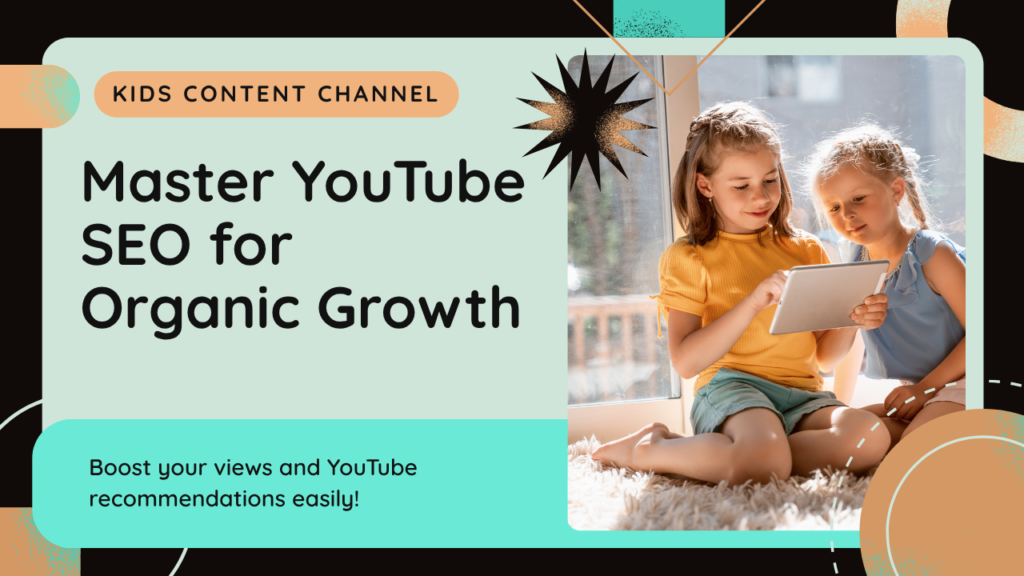
If you’re an educational content creator, especially one focusing on kids (think: phonics, reading, math basics), standing out on YouTube isn’t just about creating great videos — it’s about optimizing them for visibility and engagement.
In this blog post, we’ll break down a comprehensive YouTube SEO strategy designed to increase organic subscriber growth, watch time, and searchability for your channel.
Objective
To improve the channel’s visibility, searchability, and engagement by applying comprehensive YouTube SEO strategies, leading to organic subscriber growth and higher watch time.
1. Keyword Analysis
Goal: Identify high-performing, low-competition keywords relevant to your niche to help videos rank in YouTube search and suggested feeds.
Action Plan:
- Research Tools Used:
TubeBuddy, VidIQ, Google Trends, YouTube Autocomplete, Competitor Analysis - Types of Keywords:
- Primary keywords: e.g., phonics for kids, sight words lesson
- LSI keywords: e.g., learn to read, early reading skills
- Question-based keywords: e.g., how to teach vowels to kids
2. Title & Description Optimization
Goal: Create click-worthy, keyword-rich titles and descriptions to increase CTR and help YouTube understand your content better.
Action Plan:
- Video Titles:
- Include the target keyword early
- Keep under 60 characters
- Add emotional hooks or value (e.g., “Easy & Fun Phonics Game | Learn Short Vowels for Kids”)
- Video Descriptions:
- Use the primary keyword in the first 2 lines
- Add a 250+ word detailed content summary
- Include hashtags like
#phonicsfun #learningforkids - Add timestamps and useful links
3. 🔗 Internal Linking (Cross-Promotion)
Goal: Increase session duration and keep viewers engaged by connecting your videos strategically.
Action Plan:
- Use End Screens to link related videos, playlists, and a subscribe button
- Add Cards at high-retention points in videos
- Mention relevant videos in scripts and descriptions
4. Suggested Content Plan
Goal: Develop video topics based on keyword gaps, competitor analysis, and audience demand.
Action Plan:
- Audit competitors’ top videos
- Identify high-search, low-competition themes (e.g., silent e worksheets, consonant blends games)
- Plan a content calendar including:
- Weekly themes
- Focus keywords
- Clear CTAs (e.g., subscribe, watch next)
5. Trendy & Timely Content Ideas
Goal: Use trending topics and seasonal content to increase reach and relevance.
Action Plan:
- Monitor Google & YouTube Trends
- Tap into seasonal topics (e.g., Back to School, Holiday Learning Games)
- Create short-form YouTube Shorts with trending sounds and challenges
Optional Add-ons
Want more visibility? These add-ons can enhance performance:
SEO Reporting Dashboard – Monthly metrics and insights
Thumbnail Optimization – CTR-focused custom designs
YouTube Shorts Strategy – Expand reach via short content
Final Thoughts
YouTube SEO isn’t just for big creators — small educational channels can grow exponentially by applying the right strategies. If you’re producing meaningful learning content for kids, optimizing your channel helps ensure your work reaches more students, parents, and educators.
Need help getting started? Let’s build your channel’s SEO foundation together.
📩 DM or Contact Us to get a personalized plan.
Leave a Reply